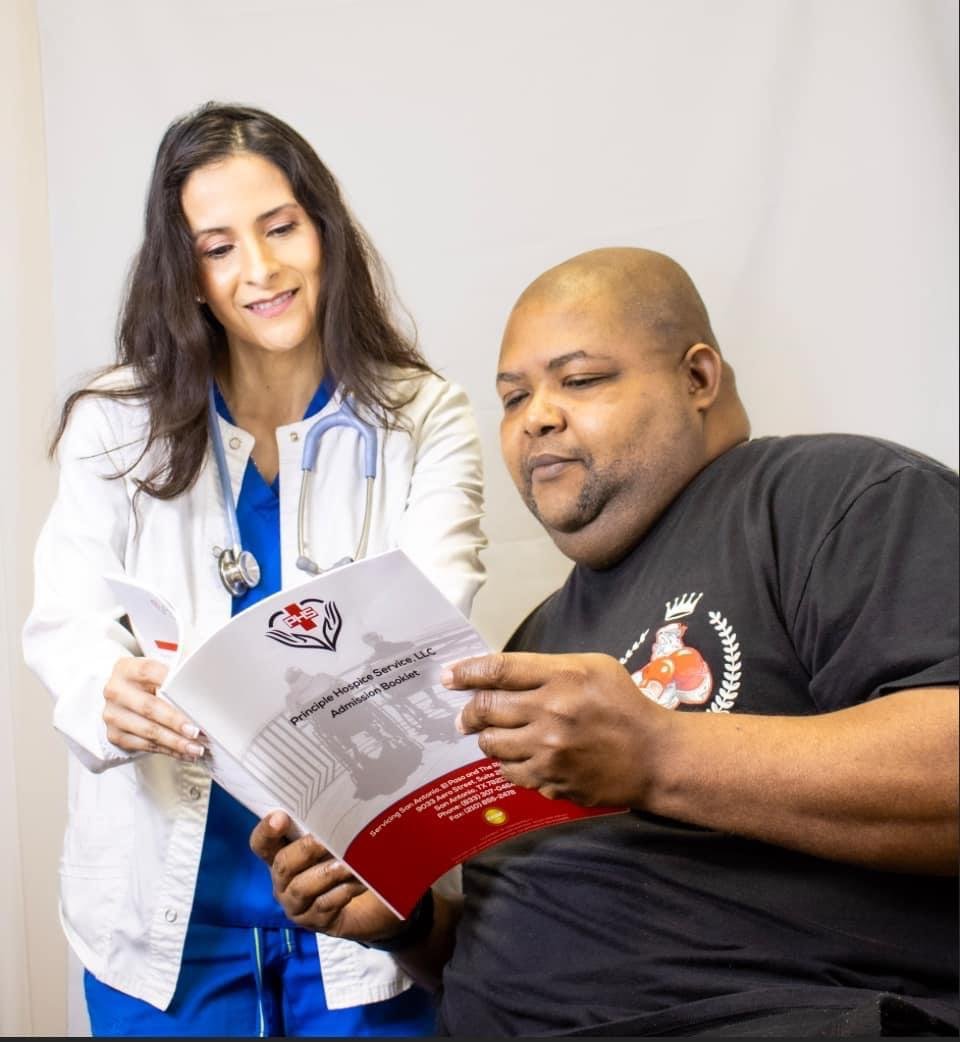Mandy Jerezano RN: Celebrating Resilience and Stroke Awareness
By Mandy Jerezano, RN
My mother suffered two consecutive strokes seven years ago, a stark reminder of the critical importance of Stroke Awareness. Her sudden illness, which forever changed our family, was a devastating blow. As the ‘glue’ that held us together, seeing her struggle was heartbreaking. However, my mom’s story is ultimately one of hope, resilience, and the incredible power of God’s will. Defying all odds, she is a medical miracle. Doctors didn’t expect her to survive and gave her only five years to live. She was left paralyzed on her right side and lost her ability to speak. Yet, here we are, celebrating her seventh stroke anniversary. This blog is a tribute to my mom, a reminder to cherish your family, and an urgent call to raise Stroke Awareness
Understanding Strokes: The Silent Killer
A stroke, often referred to as a “brain attack,” occurs when the blood supply to part of the brain is interrupted or reduced, preventing brain tissue from getting oxygen and nutrients. Within minutes, brain cells begin to die. There are two primary types of strokes:
Ischemic Stroke
An ischemic stroke is caused by a blockage in an artery supplying blood to the brain.
Hemorrhagic Stroke
A hemorrhagic stroke occurs when a blood vessel in the brain bursts, leading to bleeding in or around the brain.
Strokes are a leading cause of death and disability worldwide. Recognizing the symptoms and seeking immediate medical attention can significantly improve outcomes.
Common Symptoms of Stroke
- Sudden numbness or weakness in the face, arm, or leg, especially on one side of the body.
- Sudden confusion, trouble speaking, or difficulty understanding speech.
- Sudden trouble seeing in one or both eyes.
- Sudden trouble walking, dizziness, loss of balance, or lack of coordination.
- Sudden severe headache with no known cause.
My Mom’s Stroke Journey
We had just celebrated Mother’s Day a month prior to my mom’s health taking a rapid decline. Life for us took an unexpected turn. My mom, a vibrant and active woman, suffered two consecutive strokes. The first stroke was ischemic, blocking blood flow to a significant portion of her brain. The second stroke followed shortly after, a hemorrhagic stroke, compounding the damage.
Immediate Aftermath
In the immediate aftermath, doctors were grim. They did not expect her to survive the week, let alone the next five years. My mom was left paralyzed on her right side and unable to speak, a condition known as aphasia. This was a challenging period for our family, filled with uncertainty and fear.
The Power of Prayer and Determination
Despite the bleak prognosis, our family clung to hope. We prayed fervently, believing in the power of God’s will. My mom’s determination and spirit were unyielding. Slowly but surely, she began to show signs of improvement. Her recovery journey was not easy, but it was marked by small, significant victories.
Rehabilitation and Recovery: A Long Road
Rehabilitation was a crucial part of my mom’s recovery. It involved a multidisciplinary approach, including physical therapy, occupational therapy, and speech therapy.
Physical Therapy
Physical therapy focused on regaining strength and mobility in her paralyzed right side. The therapists worked on exercises to improve muscle strength, coordination, and balance. Progress was slow, but with persistence, she began to regain some movement.
Occupational Therapy
Occupational therapy aimed to help my mom relearn daily activities. This included tasks like dressing, cooking, and personal care. The goal was to enable her to lead as independent a life as possible.
Speech Therapy
Speech therapy was perhaps the most challenging aspect of her rehabilitation. Aphasia had robbed her of her ability to communicate. Speech therapists used various techniques to help her regain her language skills, including picture cards, speech exercises, and technology-assisted communication devices.
A Testament to Resilience
My mom’s journey is a testament to human resilience and the miracles that can happen when hope, faith, and determination come together. Today, she communicates through a combination of gestures, expressions, and a few spoken words. With her physical limitations and the residual effects of her strokes, my mom has adapted remarkably well.
The Role of Family Support
Our family’s support played a crucial role in her recovery. We rallied around her, providing emotional and physical support. We attended therapy sessions, learned about stroke recovery, and adapted our lives to her needs. The experience brought us closer together and strengthened our bond.
The Importance of Stroke Awareness
My mom’s story highlights the critical importance of stroke awareness. Recognizing the signs of a stroke and seeking immediate medical attention can save lives and reduce the severity of disability. Here are some essential points to consider:
Risk Factors for Stroke
Understanding the risk factors can help in preventing strokes. Some of the common risk factors include:
- High blood pressure: The leading cause of stroke.
- Diabetes: Increases the risk of stroke.
- Heart diseases: Conditions like atrial fibrillation can lead to strokes.
- Smoking: Significantly raises the risk of stroke.
- Obesity: Linked to various health issues, including stroke.
- High cholesterol: Can lead to blocked arteries, causing strokes.
Preventative Measures
Taking proactive steps can reduce the risk of stroke:
- Regular exercise: Helps maintain a healthy weight and reduces blood pressure.
- Healthy diet: Low in saturated fats, cholesterol, and sodium.
- Managing chronic conditions: Keeping conditions like diabetes and hypertension under control.
- Quitting smoking: Reduces the risk of stroke and improves overall health.
- Regular check-ups: Helps in early detection and management of risk factors.
Cherish Your Loved Ones
One of the most profound lessons from my mom’s experience is the importance of cherishing your loved ones. Life is unpredictable, and circumstances can change in an instant. Here are some ways to strengthen family bonds and create lasting memories:
Spend Quality Time Together
Make an effort to spend quality time with your family. Engage in activities that everyone enjoys, whether it’s a family game night, a weekend outing, or simply sharing meals together.
Communicate Openly
Open communication is key to maintaining strong relationships. Share your thoughts, feelings, and experiences with your loved ones. Listen to them and provide support when needed.
Show Appreciation
Express your appreciation for your family members. Small gestures of kindness, words of gratitude, and acts of love can go a long way in strengthening your bond.
Create Traditions
Creating family traditions can provide a sense of continuity and belonging. Whether it’s a holiday tradition, a weekly family gathering, or an annual trip, these traditions create lasting memories.
The Miracle of My Mother
My mom’s journey is nothing short of a miracle. Despite the grim prognosis, she has defied all odds. Her strength, resilience, and unwavering faith have been an inspiration to our family and everyone who knows her. She is a living testament to the incredible power of God’s will.
The Role of Faith
Throughout this journey, our faith has been a source of strength and comfort. We believe that God’s will played a significant role in her recovery. Our prayers, along with the prayers of our extended community, provided hope during the darkest times.
Celebrating Small Victories
Every small victory in my mom’s recovery was a cause for celebration. From regaining a slight movement in her hand to being able to express her needs through gestures, these milestones reminded us of the progress she was making.
Conclusion: A Call to Action
As we celebrate my mom’s seventh stroke anniversary, I urge everyone to recognize the importance of stroke awareness. Understanding the risk factors, recognizing the symptoms, and seeking immediate medical attention can save lives and improve outcomes. Additionally, cherish your loved ones and make the most of the time you have together.
Takeaway Points
- Know the symptoms of stroke: Sudden numbness, confusion, trouble speaking, seeing, or walking, and severe headache.
- Understand the risk factors: High blood pressure, diabetes, heart diseases, smoking, obesity, and high cholesterol.
- Take preventative measures: Exercise regularly, eat a healthy diet, manage chronic conditions, quit smoking, and have regular check-ups.
- Cherish your family: Spend quality time, communicate openly, show appreciation, and create traditions.
My mom’s story is a powerful reminder that sometimes, things don’t turn out as predicted. The power of God’s will is truly amazing. Let’s raise awareness about strokes and support each other in this journey called life.
FAQs
What are the primary types of strokes?
There are two primary types of strokes: ischemic stroke, caused by a blockage in an artery supplying blood to the brain, and hemorrhagic stroke, which occurs when a blood vessel in the brain bursts.
What are the common symptoms of a stroke?
Common symptoms include sudden numbness or weakness, confusion, trouble speaking, difficulty understanding speech, trouble seeing, trouble walking, dizziness, loss of balance, and severe headache.
What are the risk factors for stroke?
Risk factors include high blood pressure, diabetes, heart disease, smoking, obesity, and high cholesterol.
How can I reduce my risk of stroke?
You can reduce your risk by exercising regularly, eating a healthy diet, managing chronic conditions, quitting smoking, and having regular check-ups.
Why is family support important in stroke recovery?
Family support provides emotional and physical assistance, encourages rehabilitation, and helps the patient adapt to new challenges.
How can faith impact stroke recovery?
Faith can provide strength, hope, and comfort during difficult times, helping patients and families cope with the challenges of stroke recovery.
Introduction: “In this blog, I want to highlight the crucial importance of Stroke Awareness through my mother’s remarkable journey of recovery.”
Body Section:
- Understanding Stroke Awareness:
“Recognizing the signs of a stroke early is a vital aspect of Stroke Awareness that can save lives and improve recovery outcomes.” - The Role of Family in Stroke Awareness:
“Our family’s experience taught us that Stroke Awareness is not just about knowing the symptoms, but also about understanding the ongoing support required during recovery.”
Conclusion: “As we celebrate my mom’s seventh stroke anniversary, let this story serve as a powerful reminder of the importance of Stroke Awareness in protecting our loved ones.”
Suggested Links:


